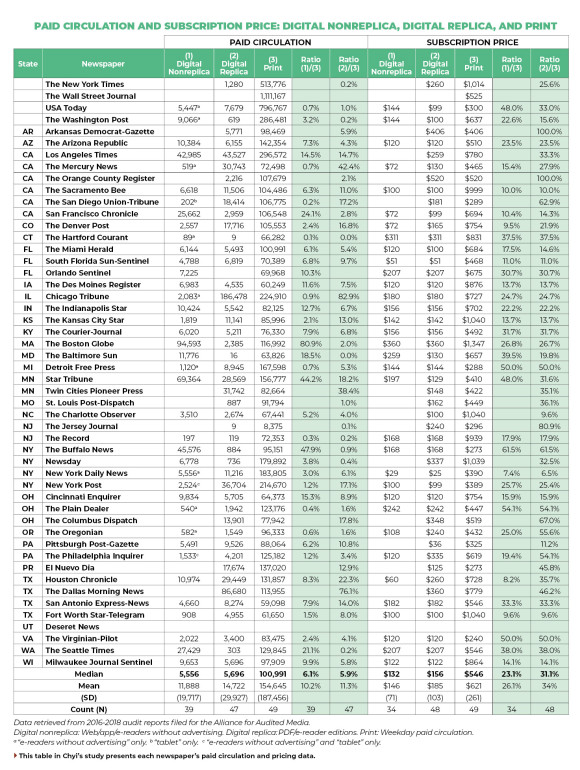FOR IMMEDIATE RELEASE
This study systematically analyzed the circulation and pricing data of 18 prominent newspapers, focusing on periods preceding and during the pandemic. The findings underscore a dynamic landscape, highlighting notable shifts and critical insights into subscribership behavior.
Key findings from the study include:
- Digital Circulation Surge and Subsequent Decline: Following the onset of the Covid-19 pandemic, digital circulation experienced a rapid surge, only to subsequently decline after reaching its peak in Q3 2021.
- Print Circulation Decline Amidst Dramatic Price Hikes: The study revealed a continued decline in print circulation, significantly impacted by dramatic price hikes—an almost doubling of prices between 2016 and 2019.
- Print Edition Resilience Despite Decline: Despite circulation declines, the print edition remains the core product, serving more subscribers who are willing to pay substantially higher prices compared to digital subscribers.
The study highlights a glaring price gap of 6 to 1 between print and digital subscriptions. Although the increase in digital subscriptions during the Covid-19 period seemed promising, it failed to generate revenue at par with the loss on the print side. Consequently, digital transformation means a substantial loss in total subscription revenue.
This study presents a sobering perspective on the intricate dynamics of newspaper subscriptions and urges a deeper exploration into the industry’s evolving challenges and opportunities.
The comprehensive findings, presented through 37 charts and 5 tables, are detailed in the article, which is publicly accessible. Download the full report here: https://www.cogitatiopress.
For further information, please contact lead author Iris Chyi, Professor of Journalism and Media at the University of Texas at Austin, at chyi@mail.utexas.edu
###



